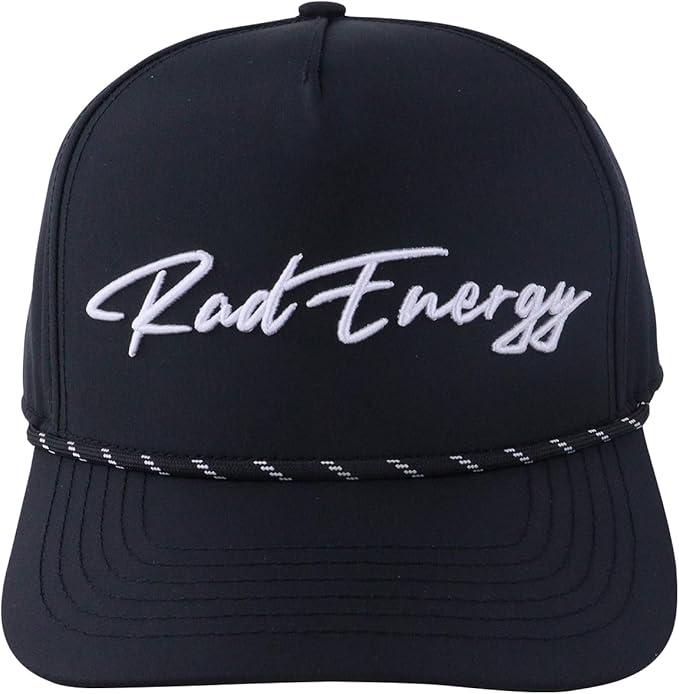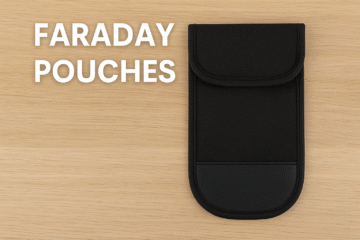What Is Anti Radiation Clothing and Does It Really Work Against EMF & RF Exposure?
Anti radiation clothing is gaining traction among wellness-minded consumers. This article will explain what anti radiation clothing is, why many feel it’s needed in today’s wireless world, the science behind how it works, show real-world product examples with pricing, and explore how you can incorporate it into your everyday life.
What Is Anti Radiation Clothing?
Anti radiation clothing refers to garments designed to reduce exposure to electromagnetic fields (EMF) and radiofrequency (RF) radiation. These garments typically incorporate conductive materials (silver-coated fibers, copper, stainless steel threads) woven into fabric so that the body is shielded from ambient RF emissions from devices like routers, cell towers, smart-meters, WiFi, Bluetooth, etc.
The goal is not to make you immune to all radiation — think of it as mitigation rather than elimination. It’s one piece in a larger strategy of EMF reduction and mindful exposure.
🖼️ Image prompt: Close-up of fabric woven with silver-coated fibers showing conductive threads.
🖼️ Image prompt: Person wearing a silver-lined hoodie working on a laptop in a WiFi-rich home setting.
🖼️ Image prompt: Evening scene of a person relaxing in a shielded poncho next to a wireless router.
Why People Are Using Anti Radiation Clothing
- Our modern environment has more wireless signals than ever: 5G antennas, WiFi routers, Bluetooth devices, smart-home sensors. This increases ambient RF exposure.
- While mainstream regulatory bodies say that low-level RF exposure from wireless devices hasn’t been definitively proven to cause harm for average users, many choose a precautionary lifestyle approach, especially for sleep, children, or sensitive individuals.
- Some individuals report symptoms they associate with electromagnetic exposure (“electro-hypersensitivity”) and choose anti radiation clothing as one aspect of comfort or risk-management.
- For those already pursuing low-EMF home environments, wearing shielding apparel can feel like a tangible, wearable layer of defense.
🖼️ Image prompt: Home office with multiple wireless devices active; a person wearing an anti-radiation T-shirt sits subtly.
🖼️ Image prompt: Travel scene where a commuter uses shielding accessories (hat, hoodie) in a high-signal environment (airport, train).
The Science Behind Anti Radiation Clothing
How It Works
- Conductive fibers in the fabric act similarly to a Faraday cage: they redirect or absorb RF waves so they don’t penetrate as readily into the body.
- The shielding effectiveness (often measured in decibels, dB) depends on material conductivity, thread density/coverage, frequency range, garment fit, and continuity of the conductive layer. For example, one study showed knitted fabrics could reduce electromagnetic radiation in the 100 MHz-1000 MHz range. PMC+1
- Some brands publish testing figures: for example, one German-brand states 10 dB reduction (≈ 95% attenuation) in the 10 MHz-4 GHz range for silver-coated fibre clothing. Conscious Spaces
Key Considerations
- Coverage area: A hat shields the head; a full jacket or hoodie provides more body coverage. More surface = more potential shielding.
- Fit and continuity: Loose seams or open gaps reduce effectiveness because RF can penetrate through cracks or openings.
- Frequency specificity: Materials may perform differently at WiFi (2.4–5GHz), cellular (≈ 600 MHz–3.5 GHz) or mmWave 5G (>24GHz). Ensure the product is tested or rated across relevant frequencies.
- Material durability & care: Conductive threads may degrade over time or with improper washing. Choosing quality brand and following care instructions matters.
- Realistic expectations: Shielding reduces exposure, doesn’t necessarily eliminate all effects. It’s a mitigation strategy — not a guarantee.
🖼️ Image prompt: Diagram of RF waves hitting a shielded garment and being reflected/absorbed.
🖼️ Image prompt: Close-up of garment seam showing conductive thread continuity.
Product Examples & Price Ranges
Here are selected anti radiation clothing items available today, with approximate pricing and distinguishing features:

WOREMOR EMF & 5G Shielding Silver Hoodie
$269.00
•
EMR Shielding Solutions + others

DefenderShield EMF Radiation Protection Hooded Jacket
$239.99
•
DefenderShield + others

HAVN WaveStopper T‑Shirt 2.0
$148.00
•
HAVN + others

RadEnergy EMF‑Blocking Snapback Cap
$38.40
•
Etsy

WOREMOR Silver+ T‑Shirt
$119.00
•
EMR Shielding Solutions

e‑SMOG Men’s 5G/EMF Wave Defense Tank
$67.50
•
biopureus.com

EMF Protection Zip‑Up Hoodie
$159.00
•
Healthy & Grounded

WOREMOR EMF & 5G Shielding Silver Pants
$229.00
•
EMR Shielding Solutions + others
Here’s a brief breakdown of each:
- WOREMOR EMF & 5G Shielding Silver Hoodie: Premium silver-elastic hoodie made in Canada, designed for full upper-body coverage, blocking up to ~99.99% signals. Price ~ $269.
- DefenderShield EMF Radiation Protection Hooded Jacket: Stylish jacket with silver-lining, blocking claimed up to 99% of RF from 300 Hz–10 GHz. Price ~ $239.99.
- HAVN WaveStopper T‑Shirt 2.0: Everyday T-shirt with inner 360° silver lining, designed for torso coverage with ~99.7% blocking. Price ~ $148-178.
- RadEnergy EMF‑Blocking Snapback Cap: Entry-level headwear shielding accessory, with Faraday-style lining. Price ~ $38-50.
- WOREMOR Silver+ T‑Shirt: Everyday silver-fiber tee, budget option (~$119) for torso coverage with shielding performance.
- e‑SMOG Men’s 5G/EMF Wave Defense Tank: Lower-body / torso tank option, budget friendly (~$67.50) for partial coverage.
- EMF Protection Zip‑Up Hoodie: Mid-price zip hoodie (~$159-169) with silver fiber blend for upper-body protection.
- WOREMOR EMF & 5G Shielding Silver Pants: Lower-body silver-elastic pants designed for shielding from knees to waist, price ~ $220-229.
What to note when comparing:
- Higher coverage = higher price.
- Upper-body (hoodies, jackets) protect more than accessories (caps, tanks).
- Brands that publish attenuation specs and frequency ranges offer more transparency.
- Comfort, style and wearability matter — you’ll use it more often if it fits your lifestyle.
How to Use Anti Radiation Clothing in Everyday Life
Practical Steps
- Identify your priority exposure times/areas — e.g., working on a laptop near WiFi, sitting next to a smart-meter wall, sleeping near a router.
- Choose appropriate garment type — for example: a hoodie or jacket for general wear; a cap for commuting/travel; tanks or pants for home/relaxation.
- Wear it when exposure is highest — commuting, travel, near multiple wireless sources. You may not need it at all times, but strategic use can matter.
- Maintain garment integrity — follow washing instructions (gentle cycle, no bleach, low-heat dry) to ensure the conductive fibers retain performance.
- Combine with environmental strategies — anti radiation clothing is a layer in a broader low-EMF lifestyle: use wired connections, reduce screen time, increase distance from antennas, consider shielding fabrics in the home.
Lifestyle Integration
- Choose styles that fit your wardrobe — think subtle, casual, modern — not obviously “radiation-gear”.
- Rotate garments — wear the heavy shielding hoodie when exposure is higher; lighter options when less.
- Use it as part of your wellness toolkit. Just like good sleep hygiene or dietary practices, wearing considerate apparel can reinforce a balanced mindset.
- Communicate with household members — if you live with others who don’t share the exact concern, explain that this is about limiting cumulative exposure, not fear or alarm.
🖼️ Image prompt: Person at a workstation using a silver-lined hoodie, laptop, router visible in background.
🖼️ Image prompt: Traveler on a train wearing a shielding cap and hoodie, smartphone in hand, wireless signals illustrated.
🖼️ Image prompt: Nighttime bedroom scene: user wearing a shielding T-shirt or tank, router turned off or moved, restful lighting.
Common Mistakes & FAQs
Mistakes to Avoid
- Expecting perfect protection: No clothing blocks 100% of all radiation. It’s about reduction and balance.
- Ignoring garment fit: A loose hoodie or gaps around the head/neck reduce effectiveness.
- Skipping care: Conductive fibers degrade over time if washed improperly.
- Relying solely on clothing: Environmental exposure reduction (distance, device management) remains essential.
- Choosing style over substance: A garment that looks good but has no published shielding data may underperform.
Frequently Asked Questions
Q: Does anti radiation clothing eliminate RF exposure?
A: No. It reduces exposure by attenuating or redirecting RF waves, but it does not create a perfect shield like an industrial Faraday enclosure.
Q: Is it safe to wear all day?
A: Generally yes — assuming the garment is properly fitted and comfortable. If you feel heat, restricted movement or discomfort, choose a lighter option.
Q: How do I know a brand is trustworthy?
A: Look for published lab test results (attenuation in dB, frequency ranges), transparent materials specs, return policy, and brand longevity.
Q: Does clothing matter more than other strategies (reducing device use, increasing distance)?
A: Clothing is one pillar. Environmental strategies (turning off devices, wired connections, shielding fabrics) are foundational. Clothing augments them.
Key Takeaways
- Anti radiation clothing uses conductive fibers to reduce exposure to EMF and RF radiation—think reduction, not insulation.
- It’s becoming increasingly relevant as wireless density increases and wellness-oriented individuals seek proactive exposure management.
- Science supports the concept: conductive fabrics have been shown to attenuate electromagnetic radiation in lab tests.
- There is a wide range of product pricing: from entry accessories (~$40–$70) to full upper-body garments (~$200–$300) and beyond.
- Integrate anti radiation clothing into your broader low-EMF lifestyle: habitually wear when exposure is highest, maintain garment care, and apply environmental mitigation.
References
- Pušić, T. et al. “Electromagnetic Shielding Properties of Knitted Fabric for Protection Against Electromagnetic Radiation.” PMC. PMC
- Avloni, J. et al. “Electromagnetic shielding with polypyrrole-coated fabrics.” ArXiv. arXiv
- Silver25® “5G EMF Protection Clothing (Silverwave®)”, ConsciousSpaces. Conscious Spaces
- HAVN “How Do EMFs Impact Our Health?” White Paper. HAVN+1
- EMF Health & Apparel – Mission Darkness™ collection. mosequipment.com


